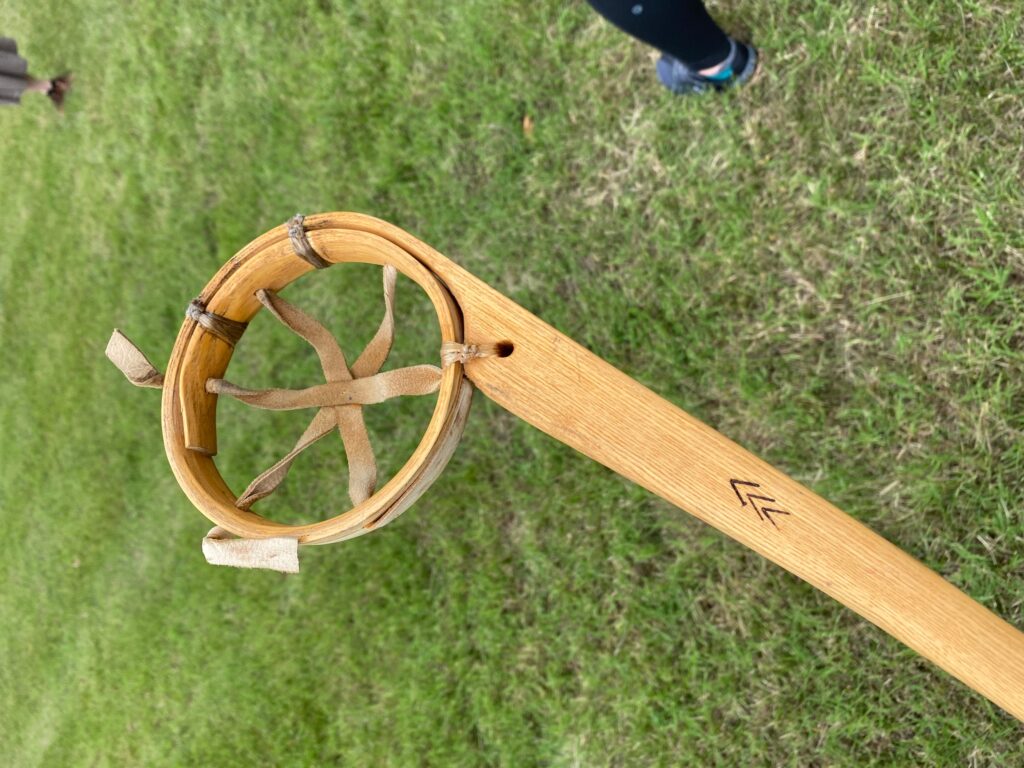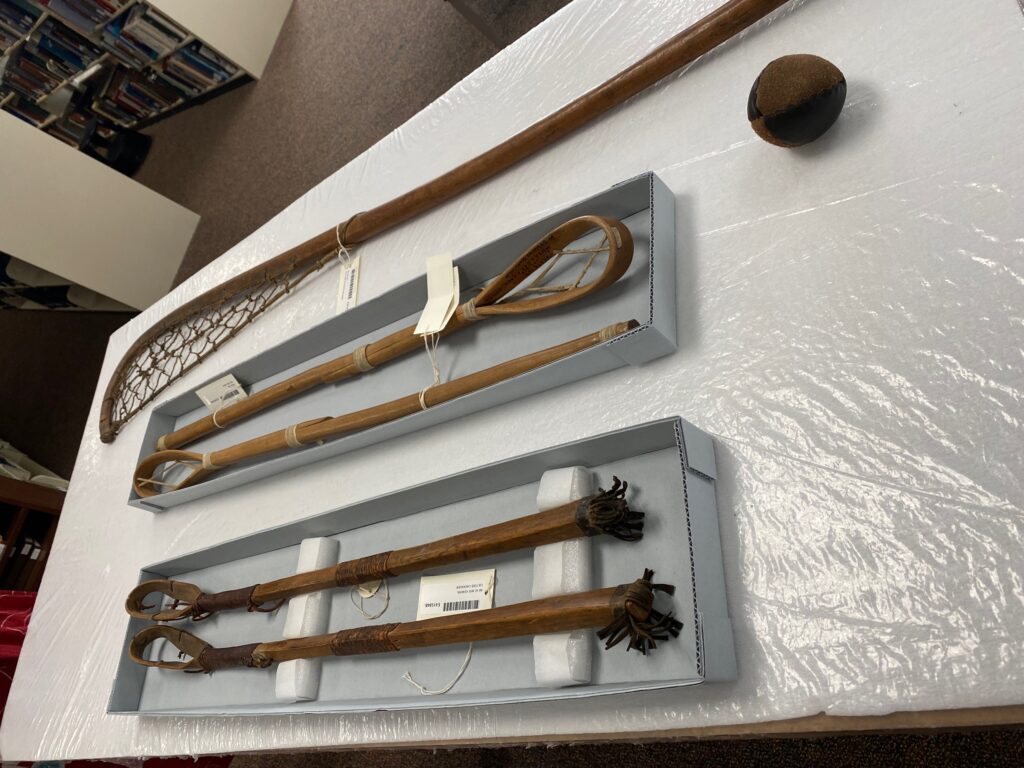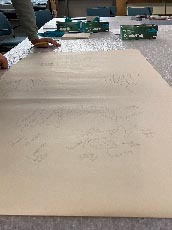Cama’i and welcome to KHM’s new blog! My name is Lynn, and I am KHM’s Curator. This summer, I was privileged to participate in the Summer Institute in Museum Anthropology (SIMA) at the National Museum of Natural History. This program is centered on preparing graduate students in anthropology to use museum collections as a source of data in research. While my participation in this program was under my PhD candidate hat, it had a major impact in my work at KHM, and I want to reflect on that in this first blog post.
My three takeaways from SIMA are:
- Museum objects are living, breathing entities.
- Objects connect out from the museum.
- Museums need to always ask, who is benefitting from this?, when organizing exhibits and programs.
Museum objects as living, breathing entities
And they had a life before coming into the museum. To illustrate this point, Joe Horse Capture (Vice President of Native Collections & Curator of Native American History and Culture at The Autry Museum) organized a series of lessons using lacrosse sticks. Horse Capture taught us how to play stick lacrosse using sticks he provided, and we played a game to get a feel for how the game is played and the role of the stick. It was a super fun lesson and very hard to play well.

In his following lesson, we looked at multiple lacrosse sticks from NMNH’s collections, and we were told to look for how the stick was used before coming into the museum.

This lesson showed us that museum objects had a life before coming into the museum, and they are still living, breathing entities. Their life in the museum is vastly different from the life they were created for, and we need to respect that previous life. We also need to critically think about how we recognize that these objects in the museum are still alive, and we need to feed them. This can be done by handling the objects or actually feeding them with offerings or rituals. We also need to view their full life stories, including their lives in the museum.
Objects connect out from the museum
These connections are both visible and invisible to visitors. While at SIMA, I looked at collections of baskets from southern Alaska. I kept noticing repeating patterns (looking very similar to KHM’s logo) on the baskets. Immediately, I likened it to our museum’s logo and where that logo came from. I then visited a new exhibit at the National Museum of the American Indian, and I saw these baskets made out of glass by Preston Singletary.






I would not have connected the baskets to each other if I had not worked with the collections in the NMNH. The baskets not only connect to each other, but to Tlingit culture and artistic traditions. Objects also connect out of the museum in terms of their materials, creation, and collection.
Led by Josh Bell (Curator of Globalization, NMNH), we “exploded” some objects. Exploding objects is the concept of looking at the object as if it exploded, and you could see all of its components. For example, if you exploded a beaded garment, you would see the beads, the materials used for beads, the garment material, and the sources of all these different parts (animals, components of glass, shells, etc.). You would also see the producers of the object, and the collector of the object. This process of exploding an object makes these multiple connections visible; instead of just seeing a solitary object, you see the object’s life story as embodied in the object.

Who benefits from this exhibit and program?
As colonial vehicles, museums have a legacy of taking objects from communities and placing them in often racist paradigms of collections care and displays, that would benefit the museum, not the community. The ongoing decolonizing museums movement is looking to fix this legacy through repatriation, increased access, educational programs, and new exhibits. As Joe Horse Capture prompted us, who benefits from these exhibits and programs? KHM has recently debuted our new temporary exhibit model, and in my next blog post, I hope to answer this question explicitly.
These takeaways will continue to figure into my work here at KHM, and I hope to share these efforts with you in future blog posts.
